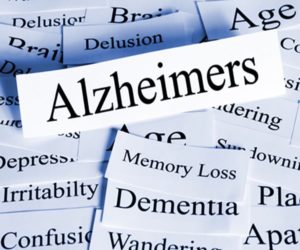Spotlight on Alzheimer’s Disease: Treatment Updates
Alzheimer’s Disease: A review and update on treatment
Alzheimer’s is a terrible disease affecting many of our loved ones. It is caused by the buildup of B-amyloid fibrils and abnormal tau proteins. The buildup of these proteins causes dementia. This dementia is characterized by cognitive impairments such as difficulty thinking and understanding, forgetfulness, making things up, mental confusion, difficulty concentrating or an inability to create new memories. Behaviors such as aggression, difficulty with self-care, personality changes, wandering or getting lost are common. Mood swings can occur along with anger or apathy. People may also develop depression or paranoia.
Alzheimer’s is caused when the tau proteins accumulate in a cell and form neurofibrillary tangles inside cells. There is also accumulation of extracellular plaques. This abnormal protein formation interferes with normal cell communication and causes early cell death. The risk factors associated with Alzheimer’s disease are: obesity, diabetes, depression, smoking, and improper diet. Alzheimer’s can have an early onset which has a large genetic component or a late onset which has a large environmental or lifestyle component.
Testing can be done for early onset Alzheimer’s by looking at the amount of amyloid or tau proteins in cerebral spinal fluid. Cerebral spinal fluid is the fluid surrounding the brain and spinal cord.
There are only 5 drugs approved by the FDA to treat Alzheimer’s. Memantine (Namenda) works by blocking the neurotransmitter glutamate. Other drugs such as rivastigmine (Exelon), donepezil (Aricept) and galantamine (Razadyne) work by increasing the amount of acetylcholine available. Acetylcholine is a neurotransmitter that allows brain cells to communicate. The last drug, tacrine (Cognex) is less often prescribed as it can cause liver damage. These drugs only help with symptoms. They do not affect disease progression.
Experimental therapies are looking at developing antibodies to attach the abnormal proteins. These efforts are hampered by the side effects of the antibodies. To combat oxidative stress, ferulic acid, epigallocatechin-3-gallate and nano formulations of naturally occurring curcumin have shown promise. Drugs such as rapamycin (Sirolimus) or latrepirdine (Dimebon) stimulate the brain cells to degrade the cobweb of naughty proteins. Metformin seems to help limit tau protein formation. Resveratrol also enhances brain cleanup of the tangled proteins.
The available drugs have problems crossing the blood brain barrier. The blood brain barrier keeps bacteria and other unwanted villains away from the brain and spinal cord. Research is ongoing to facilitate drugs crossing the blood brain barrier so they can arrive to the intended target.
In conclusion, Alzheimer’s can be inherited or acquired through poor lifestyle choices. While there are medications that can help with symptoms, the FDA approved medications do not change the course of the disease. New research is promising in better medications and better delivery systems.
The Research
Front Aging Neurosci. 2017 Nov 1;9:356. doi: 10.3389/fnagi.2017.00356. eCollection 2017.
Perspective Insights into Disease Progression, Diagnostics, and Therapeutic Approaches in Alzheimer’s Disease: A Judicious Update.
Jan AT1, Azam M2, Rahman S1, Almigeiti AMS1, Choi DH1, Lee EJ1, Haq QMR2, Choi I1.
1 Department of Medical Biotechnology, Yeungnam University, Gyeongsan, South Korea.
2 Department of Biosciences, Jamia Millia Islamia, New Delhi, India.
Abstract
Alzheimer’s disease (AD) is a neurodegenerative disorder characterized by the progressive accumulation of β-amyloid fibrils and abnormal tau proteins in and outside of neurons. Representing a common form of dementia, aggravation of AD with age increases the morbidity rate among the elderly. Although, mutations in the ApoE4 act as potent risk factors for sporadic AD, familial AD arises through malfunctioning of APP, PSEN-1, and-2 genes. AD progresses through accumulation of amyloid plaques (Aβ) and neurofibrillary tangles (NFTs) in brain, which interfere with neuronal communication. Cellular stress that arises through mitochondrial dysfunction, endoplasmic reticulum malfunction, and autophagy contributes significantly to the pathogenesis of AD. With high accuracy in disease diagnostics, Aβ deposition and phosphorylated tau (p-tau) are useful core biomarkers in the cerebrospinal fluid (CSF) of AD patients. Although five drugs are approved for treatment in AD, their failures in achieving complete disease cure has shifted studies toward a series of molecules capable of acting against Aβ and p-tau. Failure of biologics or compounds to cross the blood-brain barrier (BBB) in most cases advocates development of an efficient drug delivery system. Though liposomes and polymeric nanoparticles are widely adopted for drug delivery modules, their use in delivering drugs across the BBB has been overtaken by exosomes, owing to their promising results in reducing disease progression.
KEYWORDS:
Alzheimer’s disease; diagnostics; drugs; neurodegeneration; therapeutics












